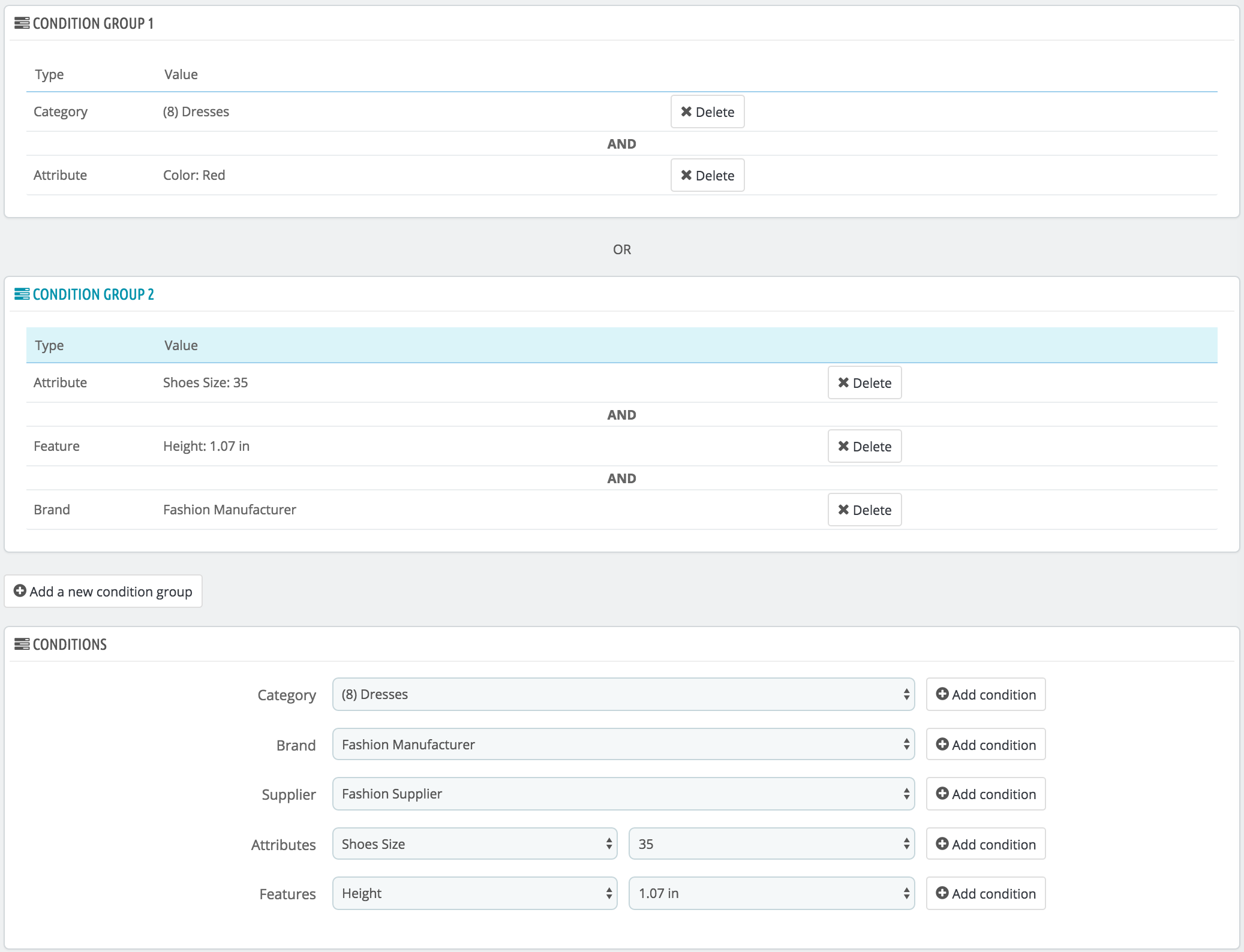...
The first form is easy to understand.
This is where you set who should benefit from the rule, what the discount should be, and other details.
- Name. The name is public, so you should keep it casual.
- Shop. Multistore mode only. The rule applies to customers who buy through a specific shop. Only available if you have at least two shops.
- Currency. The rule applies to customers who set to pay with a specific currency.
- Country. The rule applies to customers from a specific country.
- Group. The rule applies to customers who belong to a specific customer group.
- From quantity. The rule applies if the order has at least a specific number of matching products.
- Price (tax excl.). The new price for the product selection. Here you can set the public price of the products that match the rules that you are putting in place. By default, the rule applies to the price initally initially set.
- From and To. The rule applies in this time frame.
- Reduction type. The discount can either be an amount of money , or a percentage of the order total.
- Reduction with or without taxes. The discount can either include the tax , or leave the tax as is.
- Reduction. The value of the reduction. Depending on the "Reduction type" above, putting "10.0" in the field can either mean "$10 off" (depending on the default currency) or "10% off".
...
The "Conditions" section is where you set the products to which the category price rule applies. It only appears if you click on the "Add a new condition group" button.
| Warning |
|---|
If no conditions is are set, the price rule will apply to ALL products of your catalog. Be careful not to forget the conditions! |
Conditions are built around condition groups, meaning that your data from the "Catalog price rule" section above can be applied to many different ranges of products.
Conditions are grouped in an inclusive manner: all conditions of the group have to apply for the catalog price to apply. Hence the "AND".
Meanwhile, condition groups are exclusive: only one group has to apply for the catalog price to apply. Hence the "OR".
...
By default, new conditions are added to the condition group that was created last. If you need to add conditions to a previous group, click on that group to highlight it, and then add your conditions.
| Warning |
|---|
You cannot currently delete a condition group. |

